Haven’t picked her up yet. That’s the current owners way of doing it.
Slight update.
Time to move her up to the Commander gurus in Northern California to have a thorough pre-buy inspection made. I was following in the Aerostar to fly Ted, the pilot, back after drop off. But I wasn’t going to let him just fly it, I demanded some flight instruction prior to our departure! So now I can proudly say I have my first 0.5 of turbine time logged..
Startup couldn’t be easier. Turn the starter knob to FUEL ON, wait for 15psi of fuel pressure, then turn them to START RUN and then engines spool up by themselves and light up. After a few seconds just need to reduce the power levers a little so they don’t make such a racket and spin so fast.

GPU start is preferred first thing in the morning when it’s all cold soaked. After that, battery starts are fine. Garrett’s use more power to spin up than a PT6, so the batteries need to be kept in decent shape. I almost had a heart attack when I asked how much the battery is to replace ($2K+), but thankfully there are multiple options and reconditioned ones readily available. I won’t have a GPU available where I’m based, so either I need to make sure I have good batteries at all times, or I’m thinking of buying the “portable” Li-Ion GPU’s that Start Pac provide. They’re not cheap, but the good thing is they can be chucked in the baggage compartment and brought with the plane for longer trips. Here’s a link:
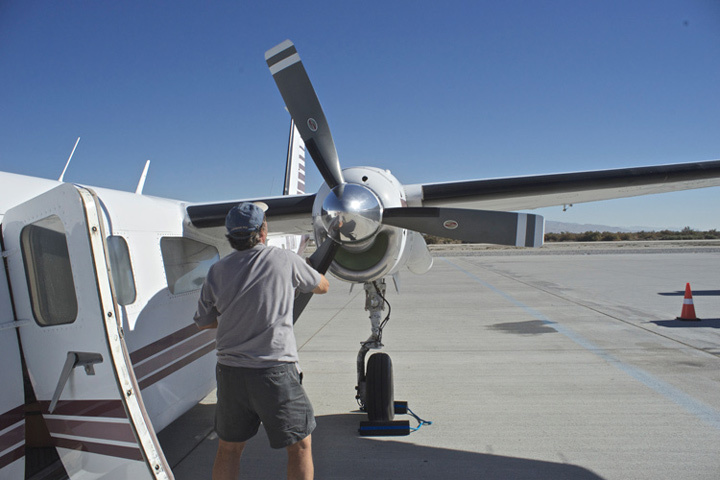
It’s recommended to hand spin prop before start to just get the gearbox wet and the blades to loosen up. It is also recommended to do it after shutdown and pull air through the hot section to cool it down and also not have the main shaft bend from thermal expansion.
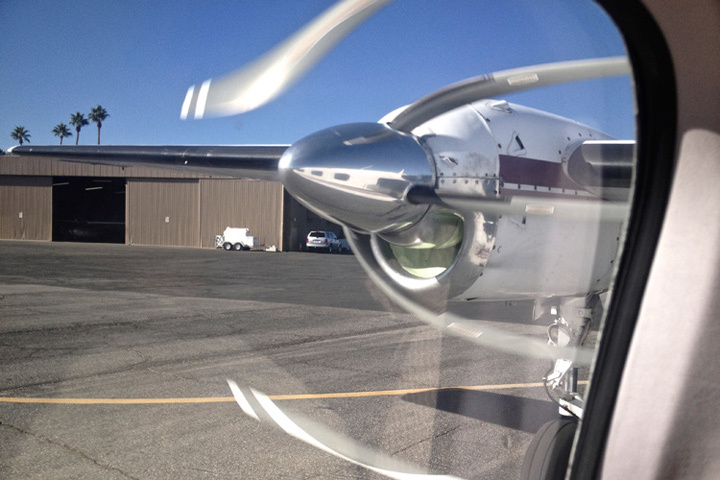
Time to taxi out. No run ups, no mag checks, none of that.

Ted’s been flying this machine for the last 13 years on charters. As the owner and plane grew older, the clients went to newer outfits and newer planes. Owner decided it was time to sell, but didn’t want the plane sold to people who would break it up or part stuff out. He had an emotional attachment to the thing. And that’s where I enter. I passed the smell test, I suppose. Ted now mainly flight instructs besides running his animal rescue farm.
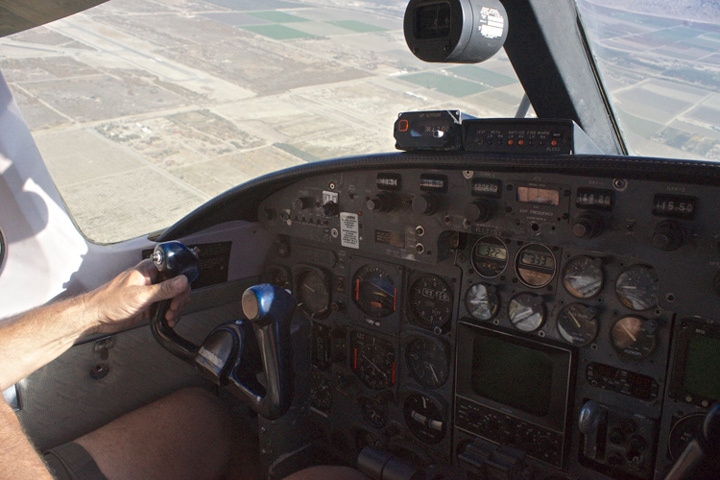
I’d never been in a turbine before so was duly impressed on takeoff. Bloody thing leaps off and climbs 3000ft/min straight out of the gate, even on a semi-hot day! Rotate around 97kts and off we go. The Commander controls are familiar to me – that sturdy, stable feel, but more than anything I’m amazed at how smooth turbines run and how silent it is inside the cockpit. Before we know it she’s at the top of the arc pushing 220kts IAS and we have to pull back. These machines are mainly flown by temperature. You can see the two digital readouts reading 322 and 333 degrees C. Max temp for takeoff is 575, and max continuos is 545, so here she’s pretty pulled back. You need the engines to be below 200 degrees for start up, or else you risk a hot start. That’s why you pull cold air through them after you shut down.
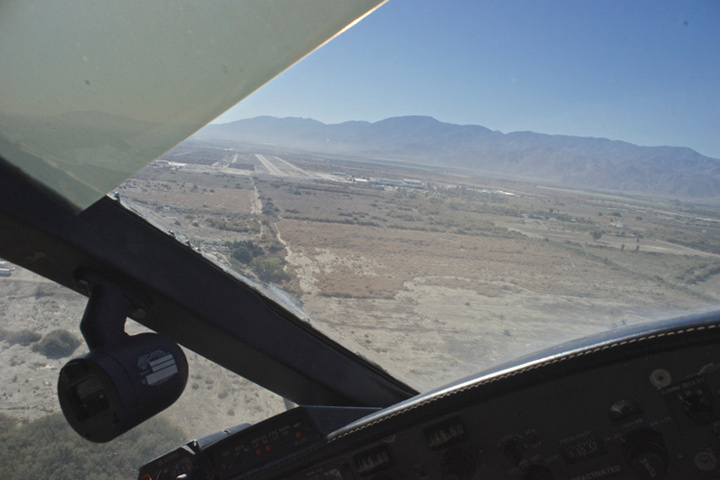
We land at Jackie Cochran/Thermal to get some cheap jet fuel. With the reverse thrust it’s almost laughable how little rwy is needed. Basically never really have to use the brakes. As we taxi in the jet punters do the “Garrett salute” (covering their ears). Inside it’s not bad at all, but they are loud on the outside. Ted forgets we were going to the cheap self serve fuel, and pulls up to the fancy FBO. Too late, they’ve already started rolling out the mat and filling up before he remembers…
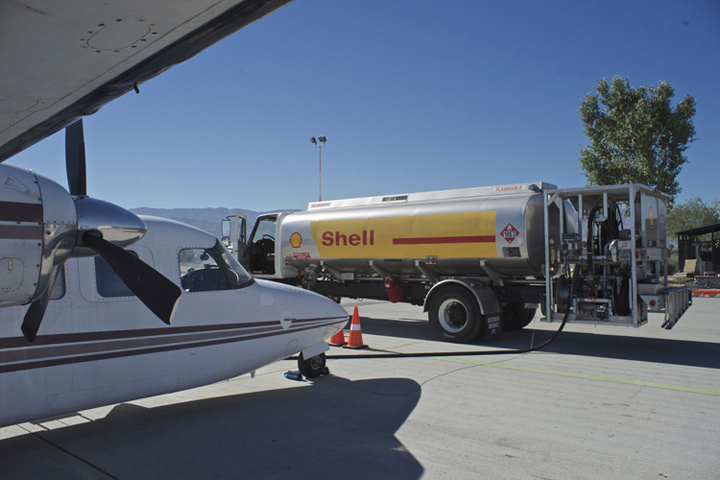
Let the pain begin! Fillups are no joke, not helped by our mistake of getting expensive FBO fuel. I manage to haggle them down to $5.20/gal, but it’s still almost a dollar more than at the self serve. Nevermind, it was worth it, I convince myself. $1500 later we’re on our way. Fuel burn down low at full throttle is closer to 300pph/engine. That will reduce to about 200pph up high.
Although I take off before Ted on our way up to Stockton, he almost immediately passed me on my left and gets there 30 min before me. He averaged 240kts whereas I was cruising at about 190kts.The Aerostar is fast and economical, but to get the most of it you need to run LOP at around 190-200kts. That will get you down to 25gal/hr in total, which is great economy. If you get a 700 model with the 350hp aside engines, which at full throttle can compete with turbines in speed, you’re talking 45-50gal/hr and a plane that won’t do LOP very well. 50gal/hr of Avgas is a lot more expensive than 65gals/hr of Jet A1. So, depending on how you look at things, the turbine isn’t just a black hole of fuel consumption. Another good thing about Jet A1 is that the price fluctuates more, there’s more competition and you’re likely to see bigger reductions. Therefore, with some planning, you can more easily get a hold of cheap Jet A1 than Avgas here. Some places are almost as low $3.50/gal in the middle of the country. That’s almost half the price of Avgas.
Plane will now have a good once over, and hopefully there will be no giant surprises. If that’s all kosher, then on we move.
Great write-up, very enjoyable. Good luck with the pre-buy. If you end up on the receiving end of somebody else’s well loved plane, its a good thing.
Jim Wurth is the guy behind Start Pac, and he is a great guy who was once part of our airport gang. He learned to fly in a ratty Luscombe he bought as a teenager and then went quickly from that to a flight engineer job, eventually working his way up to captain with Eastern Airlines. He restored his Hughes 369 helicopter beautifully and that’s what sent him down the road to developing portable power. We had some interesting technical discussions. Ask him about his GT 40 
Thanks Silvaire.
Interesting. Seems like Start Pac has been a great success.
Adam keep the posts coming, great aircraft – it seems to have come from a good home so hopefully sails through the pre-buy.
Adam,
once you get settled on the new plane, how about a book… might be a very inspirational thing to read.
Progress report.
Phase inspection completed. Lots of smaller stuff, but no real show stoppers. The cabin leaks the previous owner had mysteriously lived with for almost a decade was as mentioned not a single culprit, but multiple. All windows except one leaked, basically. “It would be easier to tell you where it didn’t leak, then where it did”, as my mechanic dryly said… But the wing root attachments (a normal culprit) did not. The worst offender was the door. Not the seal itself, but the door frame had been reinstalled at some point and it had been installed wrong (logbook does not give a reason why) and was all on the p*ss. The door didn’t fit properly, was shimmed wrong and had all sorts of problems preventing a tight seal. Unbelievable that they flew it like this for so long without being able to pressurize properly. Doorframe was re-jigged, as well as door, painted etc and now the door fits perfectly. Locking pins align great now. Even the old rubber seal is now working perfectly, so need to change that as initially thought. The untight windows and doors has also allowed small amounts of water into the cabin and we will have to change all insulation and get rid off the old nasty stuff. No corrosion though.
Engines and accessories have a clean bill of health, except there’s no logbook entry of having the nozzles sent off for overhaul in over 800hrs. Maybe they did, maybe they didn’t. Supposed to be a 200hr interval to check flow rates and spray patterns. Not a terribly costly thing to do, but something the seller will have to pay for. One starter generator needs overhauling and one hydraulic pump has a leaking seal.
Overall, so far not bad. Estimated at around $15K. My first piston twin annual was $27K, so this is a walk in the park compared.
The windows are pretty scratchy and unclear, though. I thought about replacing the front ones, but had a minor coronary when I heard about the price. There are a couple of aircraft window repair companies that come to you and do an optical restoration/polish. Seem to get great results and obviously cheaper, so that’s probably the way to go for now.
Still a month away or more before I can start flying it. I still got the Aerostar to whisk me around until someone snaps it up. But I’m very excited about the day when I’m all signed off and can take her home for the first time.

Windshields were cut a little too short when they got replaced and we now have to seal them with more sealant than it would normally take.

The experts confer.
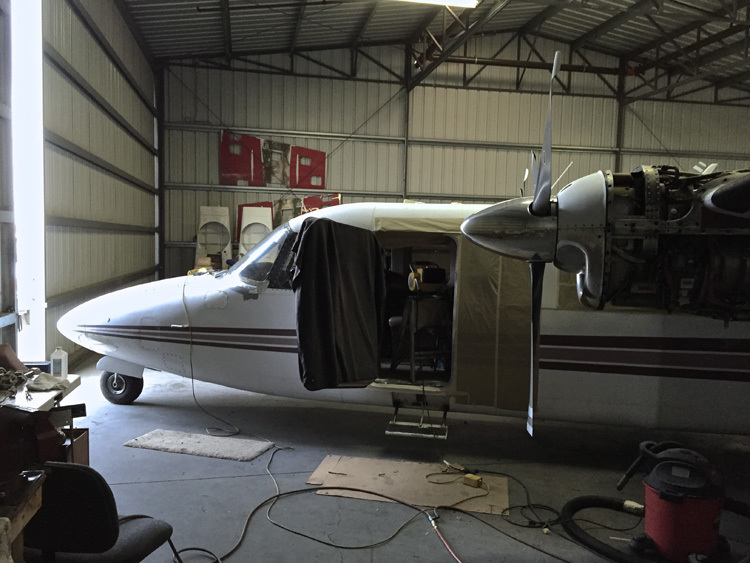
Door was the main culprit. Doorframe rigged wrong, door didn’t sit correctly, didn’t seal and didn’t lock properly. All fixed now, but they had to readjust the actual doorframe in the frame.

Engines have a clean bill of health. Starter/Generators and the spray nozzles need overhauling. None of them end-of-the-world expensive to do.
Thanks for the up-date Adam !
BTW: Are you using an independent mechanic or a shop ?
Be very wary about polishing. We had a nearly new windshield polished and the distortion introduced by the polishing rendered the windshield scrap, outside Maintenance Manual limits. The polishing outfit wouldn’t have anything to do with it, so we were on our own.
In trying to save money we cost ourselves a lot; we should just have replaced them at the start.
There are also limits as to how much polishing can be done. The windshield is part of the pressure vessel and you don’t want a failure.
Good tip, Neil. I was going going to let an aviation polishing expert do it – hopefully they know what they’re doing.